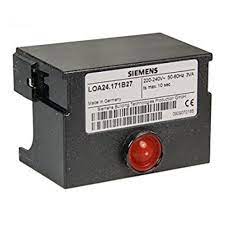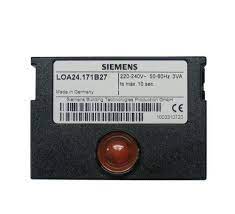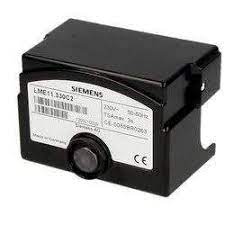Sequence Controller




Sequence Controller: Essential Role in Combustion Systems
A Sequence Controller is a key component in managing the operation of combustion systems, such as boilers, burners, and industrial furnaces. It ensures that all the operations in the combustion process, from startup to shutdown, are carried out in a safe, efficient, and predefined sequence. Below are the key aspects of sequence controllers:
Core Functionality:
Control the Sequence of Operations:
Sequence controllers manage the sequence of operations in a combustion system, which includes controlling:- Ignition
- Fuel Supply
- Air Supply
- Flame Detection
- Safety Checks
Start-Up Sequence:
During startup, the controller ensures that all prerequisites are met before igniting the burner. Common startup tasks include:- Pre-purging the combustion chamber to remove residual gases.
- Checking pilot flame (if applicable) or ensuring flame presence through flame detection systems.
- Gradual opening of fuel and air supply valves to initiate combustion safely.
Shutdown Sequence:
When the combustion process is complete or if a fault is detected, the sequence controller initiates a safe shutdown process. This includes:- Controlled closure of fuel and air supply valves.
- Gradual and safe extinguishing of the flame.
- Post-purging the chamber to ensure no unburned fuel remains.
Safety Features:
Flame Detection:
Sequence controllers are equipped with flame detectors (such as UV or IR sensors) to continuously monitor the presence of a flame. If the flame goes out unexpectedly, the controller will shut down the system to prevent the release of unburned fuel.Monitoring Critical Parameters:
Additional safety features include temperature sensors, pressure switches, and airflow monitors. These sensors continuously check the system’s operational conditions, ensuring that everything is within safe limits.Fault Detection and Alarms:
If any fault or unsafe condition is detected, such as a flame failure or loss of pressure, the sequence controller will initiate a shutdown and trigger alarms to notify operators.
Interlocking Mechanisms:
- Ensuring a Safe Sequence of Operations:
Interlocks ensure that each step in the combustion process is completed before the next step begins. For example:- Fuel valves will not open until airflow is confirmed.
- Ignition will not occur until the fuel supply is confirmed. This prevents unsafe or hazardous situations from occurring during startup or operation.
Communication and Automation:
Integration with Control Systems:
Modern sequence controllers can communicate with central control systems via standard communication protocols (e.g., Modbus, BACnet). This allows the sequence controller to be integrated into larger automation or building management systems (BMS), enabling remote monitoring, diagnostics, and control.Data Logging and Reporting:
Many advanced controllers also feature data logging, allowing operators to track performance data, fault history, and system events for preventive maintenance and diagnostics.
Programmability and Customization:
Customizable Sequences:
Some sequence controllers are programmable, allowing customization based on the specific needs of the system. This flexibility enables the adaptation of sequences to unique operational requirements such as:- Varying fuel types (oil, gas, etc.).
- Combustion at different load levels.
- Specific safety requirements in different industrial environments.
Adaptation to System Changes:
Programmable controllers can be updated or modified to accommodate changes in equipment, fuel type, or operational strategies.
Compatibility:
- Wide Range of Fuels and Burners:
Sequence controllers are designed to be compatible with different burner types and fuels (oil, gas, dual-fuel, etc.), ensuring versatility in various applications. They are often selected based on the specifications of the burner manufacturer and the operational demands of the system.
Leading Manufacturers:
Some of the well-known manufacturers of sequence controllers include:
- Honeywell: Known for advanced controllers with robust safety features.
- Siemens: Offers highly programmable and integrated control solutions.
- Fireye: Specializes in flame safeguard and combustion control systems.
- Landis & Gyr: Provides reliable and compact sequence controllers for different burner types.
Applications:
- Boilers: Sequence controllers manage the precise sequence of ignition, fuel supply, and shutdown, ensuring efficient boiler operation.
- Industrial Furnaces: In high-temperature environments, sequence controllers maintain combustion safety and energy efficiency.
- Burners: Sequence controllers are critical for controlling ignition and flame monitoring in burners for heating systems, ovens, and other industrial applications.
A Sequence Controller is a vital component in combustion systems that ensures the safe and efficient startup and shutdown of burners and furnaces. Its role in monitoring critical parameters, controlling ignition and fuel supply, and incorporating safety interlocks makes it indispensable in industries where combustion systems are used. The ability to communicate with other control systems, offer programmability, and integrate safety features ensures that sequence controllers contribute to reliable and safe operation across various industrial applications.